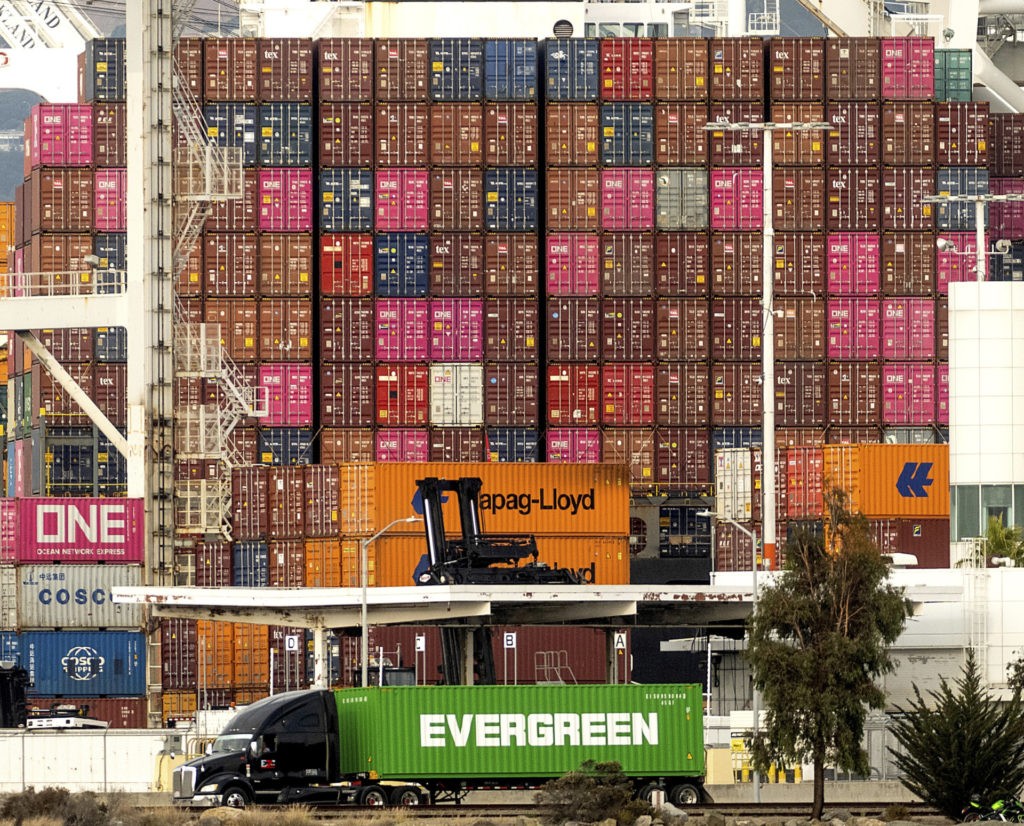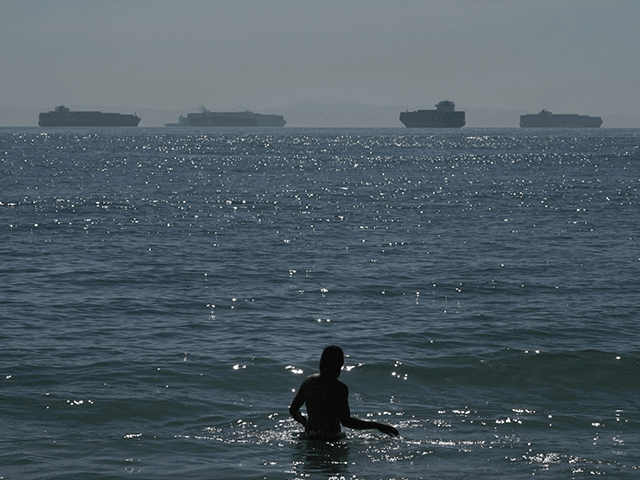Nearly 160 ships on Friday are reportedly waiting outside Long Beach and Los Angeles port complex to unload goods, Bloomberg reported.
The backlog of cargo ships outside the complex, which receives about 40 percent of the containers from around the world, is likely a main driver in President Biden’s supply chain crisis. The supply chain crisis has fueled price increases in nearly every sector of the economy for American families and workers.
Of the nearly 160 ships waiting to dock and offload cargo, Marine Exchange estimates 102 vessels are containers ships waiting to move cargo onto the docks, including 76 ships that are anchored or loitering outside the bay.
Ship Report 11/3: 159 total ships inport LA/LB including 101 at anchor or loitering & 58 at berths. Of the 159, 102 are container ships including 76 at anchor or loitering & 26 at berth. 52 vessels loitering; 45 container ships, 2 tankers, 4 bulk, 1 general cargo. pic.twitter.com/B2YKuu4cfW
— Marine Exchange (@MXSOCAL) November 3, 2021
The amount of ships waiting to unload goods seems to be increasing. Breitbart News reported October 19 that 100 ships were delayed from delivering goods – a record-breaking amount. Near the end of September, 60 ships were reported to be anchored and waiting to unload.
The backlog of vessels is due to the overflowing amount of containers at the ports. The ports are unable to move the containers onto trains or trucks quickly enough to keep up with supply. Breitbart News reported the backlog on the docks exist because ports are not releasing containers to truckers, though it is not known exactly why.

A truck passes a container ship at the Port of Oakland on Tuesday, Oct. 19, 2021, in Oakland, Calif. California farmers say they are having trouble exporting their crops because of delays in the global supply chain. Intense demand for products has led to a backlog of container ships outside the nation’s two largest ports along the Southern California coast. (AP Photo/Noah Berger)
One challenge truck drivers are experiencing is California’s “climate change” red tape. The South Coast Air Quality Management District issued a rule in May that requires supply chain points to hire electric vans or trucks instead of trucks that have larger capacity, the Wall Street Journal reported.
Moreover, the state’s Air Resources Board has required truckers to reduce trucking emissions, making it more costly and difficult to transport freight from ports to warehouses.
Truck drivers, many of whom are immigrants, must not only keep up with California’s burdensome regulations, they are required to finance their own trucks, along with repairs.
If the truckers are late on a payment, become sick, or do not have money to repair the truck, the trucking companies fire the driver and repossess the truck, along with any equity the driver has invested, USA Today reported.
The drivers who are not fired “sometimes end up owing money to their employers” and are unable to get out from under the debt. Unable to repay their employer, drivers essentially work for free, never able to earn much money.
As red tape and labor exploitation has impacted California’s truckers, the industry has fallen short of recruiting enough truckers to fill demand. In October, the American Trucking Association (ATA) revealed the trucking industry was short 80,000 drivers, 30 percent more than before the pandemic.
In the United States, the trucking industry represents 71 percent of transported goods. The percentage is expected to increase overtime, which could leave the ATA searching for 1,600,000 new drivers by 2030, CNN estimated.
Follow Wendell Husebø on Twitter @WendellHusebø

COMMENTS
Please let us know if you're having issues with commenting.